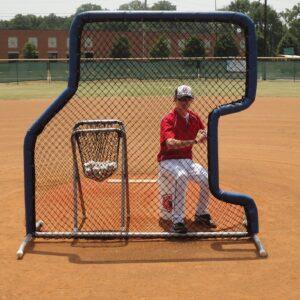One of the established traits that indicates a person is likely to be a successful athlete is the degree to which he is aggressive.
There are paper and pencil tests that measure aggressivity that some professional clubs use as scouting tools. However, it is important to understand what being appropriately aggressive means, because “being too aggressive” is often a description indicating a problem player.
Some things are obviously too aggressive: throwing at a batter’s head, charging the mound with a bat in hand. Yet brushing back is a necessary part of the game, and there needs to be some remedy when a pitcher oversteps the bounds when staking out his strike zone.
Several common sense perspectives can be used to help define what is too much aggression:
1) If direct physical harm was obviously the intent, and 2) The objective served by the action could have been accomplished by methods less likely to harm another.
Of course, acknowledging those simple standards is much easier than applying them day to day. Who is to say if there was “obvious” intent to harm?
The pitcher who beans someone shrugs his shoulders or looks surprised when the batter goes down. Well, maybe it was an accident, but why not have a severe penalty anyhow and let the pitcher’s team pay for the “accident”; intent wouldn’t even be the issue. This would only work if the penalty really mattered.
Getting one base obviously isn’t always much of a deterrent: Why not make it two bases? I bet the number of hit batters would quickly drop if runners were automatically put into scoring positions. Indeed, has anyone looked at how often batters don’t get accidentally hit when it would advance runners?
What does this have to do with whether or not a player is too aggressive? At every level a player’s play is formed within the context of the game’s rules as exercised by parents, coaches and umpires.
Even at youth levels of play, I’ve seen coaches encouraging a pitcher to retaliate. Less directly, through modeling – the unconscious learning of behaviors by observing them being practiced – children learn to act like the adults around them. If adults let their aggression get out of hand, so will their children. It’s not what they’re told is right that matters. Talk is cheap. It’s by beholding that we become changed. This is particularly true when aggression is rewarded.
If inappropriate aggression is discouraged or punished, then that, too, is observed and decreases the modeling of aggression. When parents and coaches remain cool (if they are respected), then cool is cool. Modeling appropriate aggression helps individuals lead others to better behaviors.
But what about organized leadership? Baseball, and sport in general, is a way people try to improve themselves. Where parts of the game fail or contradict that development of virtue, those parts should be changed. This requires not just individual effort, but also a concerted approach from coaches and leaders within the sport. By fostering a championship mindset in baseball, teams can create an environment where growth and character development are prioritized. This holistic approach ensures that the game not only produces skilled players, but also virtuous individuals who understand the importance of integrity and teamwork.
If baseball as an institution wants to clarify what is too much aggression, it can. Examine what has gone on in professional hockey over the past few years. Maybe it will take criminal charges for organized baseball to figure out that there is a difference between baseball and basebrawl.
Dr. Herndon P. Harding, Jr. coordinates the psychiatry curriculum and training of third-and fourth-year medical students at Florida State University’s Regional Medical School campus in Orlando. He is a prior medical director of the Florida Hospital Center for Behavioral Health and is currently a member of the USA Baseball Medical & Safety Advisory Committee. Since 1991 he has also been the team physician in psychiatry for the Los Angeles Dodgers.This article appeared in the January 2002 issue of From The Dugout and was reprinted courtesy of the National High School Baseball Coaches Association. |




